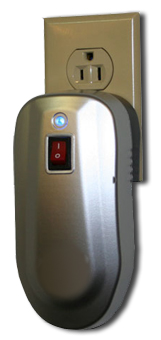If you've ever wandered through a town and spotted tiny cell towers for 5G placed on poles for street lighting. They look like little boxes however they're actually sending wireless signals from cellular providers to your phone.
They are replacing larger specially-designed cell towers. While they're not as noticeable however, they could create problems for those who live nearby.
The of the FCC's Radiation Exposure Thresholds
The FCC's Radiation Exposure Thresholds determine the safe distance that a person can be exposed to electromagnetic energy generated by wireless devices. The limits of exposure are based on scientific data which show that the energy of RF could cause harm to health.

The absorption rate specific (SAR) is a measure of the amount of radiofrequency energy that is taken up by tissues. It is typically 1.6 milliwatts per kilogram spread over a kilogram of tissue.
Since 5g is able to transmit at higher frequencies, it has the potential to cause greater energy intensity on the skin and other directly-exposed body parts. This can result in many possible harms, such as an increase in appearance of skin disorders like dermatitis, cancer of the skin and cataracts.
Due to the possible harmful effects of radiation from 5G, PSU has chosen to set a general localized power density limit of 4 mW/cm2 measured over 1 cm2, but not exceeding 30 minutes for the entire 5G spectrum at 3000 GHz. This localized limit is in accordance with the highest SAR that is spatially averaged at 1.6 W/kg, which is averaged over 1 5 grams of body tissue, at 6 GHz.
The FCC's Maximum Exposure Thresholds
If you've ever used a cell phone, you probably know that the safest distance from the tower is at least 400 meters away. This is due to the transmitting power of a cell tower increases dramatically the farther your location from the tower.
While it sounds like a good idea, the reality is that people who live close to towers may actually be more susceptible to health issues. For instance, a study conducted in 2014 in India found that residents living within 50 meters of cell towers experienced significantly more health complaints than those who lived farther away from the antennas.
how to protect your body from 5g found that people who moved into areas farther away from cell towers noticed their symptoms return to normal within a few days. Studies have also demonstrated that exposure to extreme frequencies of radiofrequency electromagnetic fields (EMFs) can lead to brain tumors, cancers and other health issues.
This is because the RF radiation utilized in wireless communications, can penetrate the human body's outer layer, which is the skin. This is important to understand because the skin serves as a protective barrier against injury to the body, infection caused by pathogenic microorganisms and infiltration of toxic substances. Additionally, how to protect your body from 5g is the biggest organ in the human body, and is responsible for keeping the integrity of other organs.
how to protect your body from 5g for the Minimum Exposure
The FCC's Minimum Exposition Thresholds are based upon numerous assumptions that are not supported by evidence from science. They include the incorrect belief that exposures to RF radiation is safe due to minimal radiation penetration in the human body (i.e., tissue heating).
The assumption also ignores the greater penetration of ELF parts of the modulated RF signal, as well as the effect on the body of short bursts generated by RF waves that are pulsed. These assumptions do not correspond with the current understanding of biological effects of RF radiation, and thus they shouldn't be relied upon for health-protection exposure standards.
In addition, the ICNIRP and FCC are limiting their maximum exposure limits to local peak SARs that are based on the peak speed of spatial absorption (psSAR) that is an inadequate dosimetric tool to assess the amount of radiation exposure. In particular the psSAR tool is not accurate when frequencies exceed 6 GHz. In addition, psSAR is not been evaluated for RF radiation that is exposed to other agents of the environment such like sunlight. The interactions of RF radiation with other environmental agents could cause synergistic or antagonistic effects. This can lead to the risk of having adverse health adverse effects. For instance, exposure to RF radiation with sunlight may increase the risk of skin cancer and exacerbate other skin disorders, such as acne.
